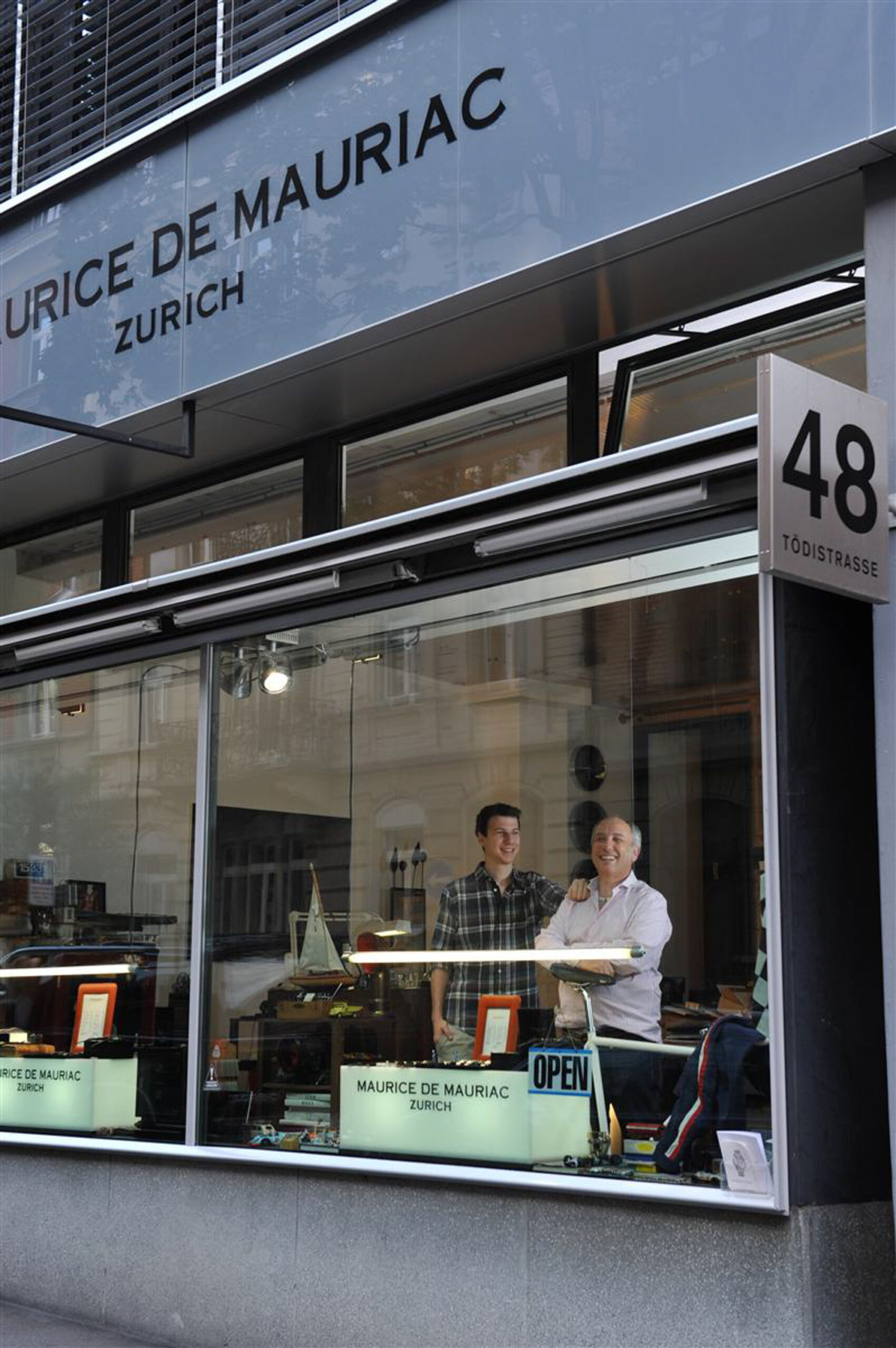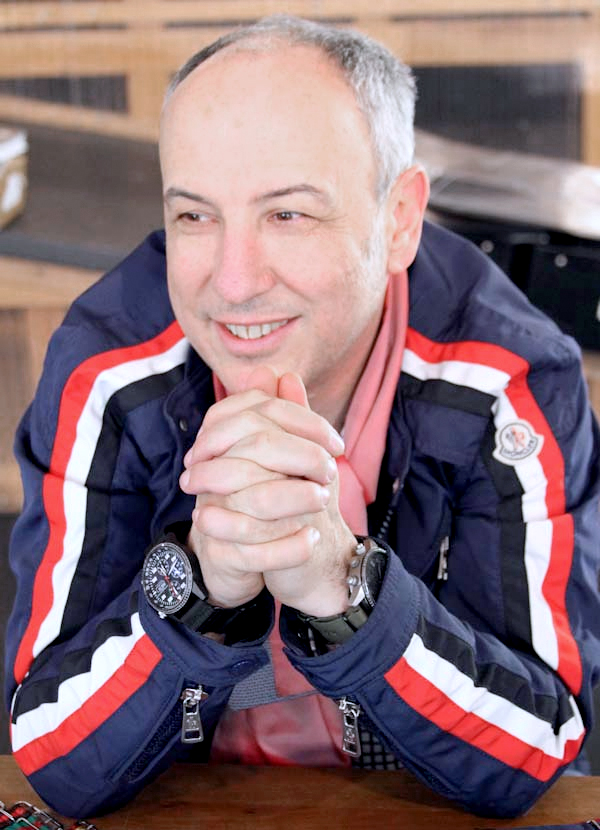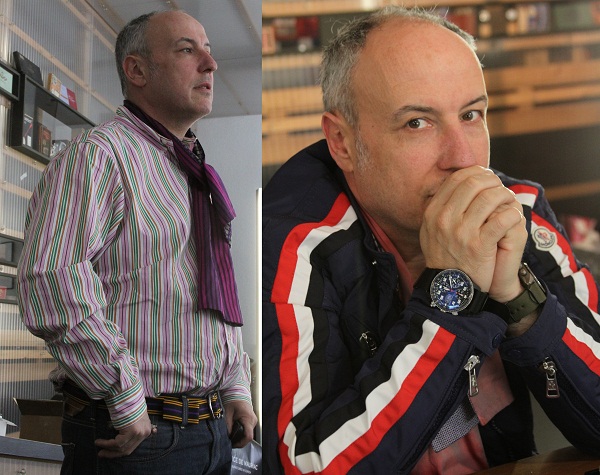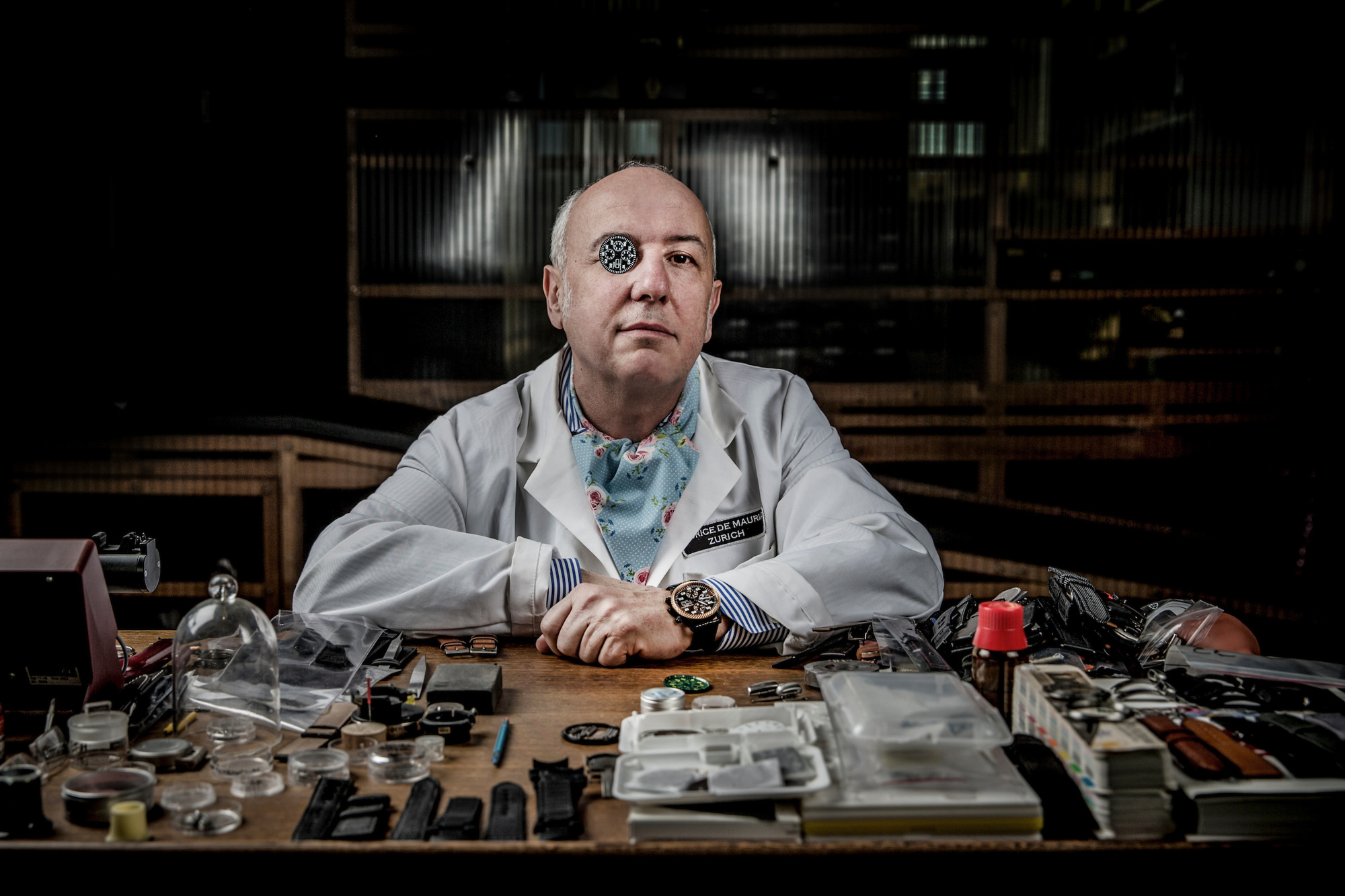 I recently received the sad news that the watch industry’s Daniel Dreifuss, founder of Swiss Maurice de Mauriac, passed away after a prolonged battle with cancer. This will be an obituary to a friend. Despite the boutique nature of his watch company, Daniel Dreifuss was an outsized mainstay of the timepiece community, especially in Switzerland (not to mention on social media). A colorful character, Daniel Dreifuss succeeded through a combination of energetic persistence, artistic panache, and a genius for identifying beauty. He built a brand and passed it on to his sons Leo and Massimo, who run it today. It was around 2010 when I first met Daniel Dreifuss, and I still recall our first phone conversation.
I recently received the sad news that the watch industry’s Daniel Dreifuss, founder of Swiss Maurice de Mauriac, passed away after a prolonged battle with cancer. This will be an obituary to a friend. Despite the boutique nature of his watch company, Daniel Dreifuss was an outsized mainstay of the timepiece community, especially in Switzerland (not to mention on social media). A colorful character, Daniel Dreifuss succeeded through a combination of energetic persistence, artistic panache, and a genius for identifying beauty. He built a brand and passed it on to his sons Leo and Massimo, who run it today. It was around 2010 when I first met Daniel Dreifuss, and I still recall our first phone conversation.
I was living in San Francisco at the time, and I recall him calling me to ask if I had received the watch he sent me to review. I had missed the delivery driver and, to get the package, I needed to drive to the shipping facility before it closed. I recall Dreifuss wanting to be on the phone with me the moment I saw the watch for the first time when I took it out of the packaging. He wanted to know my reaction. I had never experienced anyone in the industry so keenly interested in the emotional effect their products had on people. That was the beginning of a long and entertaining relationship with one of the kindest and smartest timepiece industry entrepreneurs I’d ever met.


Daniel Dreifuss always walked in a hurried manner, as though he was eager to get to his next location. He wasn’t so much an impatient person as he was someone who wanted to get a lot done. Growing up Jewish in Switzerland, he felt like both an insider and outsider in a country that often faced stark contrasts between an extreme observance of tradition and a professed welcome of diversity and sanctuary for minorities. He had similar feelings about the watch industry, a profession to which he dedicated his life’s passion. On the one hand, he loved the many ways you could make a watch along with the variety of brands and designs that were possible, and on the other hand, he lamented the closed, elite nature of the luxury class.
Dreifuss never let closed doors deter him. If he couldn’t afford to be at a major show, he found a cheap and charming place nearby. If there was a major event he could not sponsor, he would show up as a spectator and post images of his products on social media. Daniel often had the fearlessness of a street hawker with the worldliness of a fashion designer. He was at his best when helping people look good. In fact, he built that preference into how Maurice de Mauriac sold watches for many years. Maurice de Mauriac didn’t have a catalog of products as much as it had a lot of parts that Daniel could whip up into something pretty. Daniel developed a series of modular-based watch platforms that allowed him to “Lego-build” the ideal watch for each customer. He once told me that his aim was to sell one watch per day. He loved it when people came into his atelier in Zurich and sat with him while they designed a watch together. He was endlessly proud of the atelier’s location near Zurich’s financial center, and he always understood the importance of image and presentation in the luxury space. He epitomized the scrappy guy who nevertheless brushed elbows with people more successful than him, often people with far less refined tastes or opinions.

One thing Daniel was not was a prolific speaker. In true artist fashion, he preferred his work and his look to speak for him. This is not to say that Daniel was a quiet man; he most certainly was not. His speech was marked by abrupt emotion and was quickly explosive without ever being aggressive. But he spoke in brief phrases and often preferred to show rather than explain. It was clear that his speech could never quite keep up with the vivid detail of what he was thinking. I recall sitting with him some years back at his atelier in Zurich, where I had come to film a video commercial about him — and in which he needed to speak. Rather than interview him to get the right phrase, I just flat-out gave him a script to read. I wrote it there on the spot, and he agreed it sounded like what he would have liked to say. We joked that the alternative probably would’ve taken all night. I’m sure any member of the watch media who ever sought quotes from him is smirking right now.
Daniel was smart enough to know many of his own weaknesses, including communication. This is why he surrounded himself with people he believed could understand what he did, and who might tell the world. This led Daniel Dreifuss to develop a number of close and very warm relationships with many people in the watch industry, including members of the media. Daniel understood the importance of the personal touch, and he treated people like family. Not long after I met Daniel, he invited me to have dinner with his family at their home. He regularly asked how I was and was always interested in my opinion about things. Most importantly, Daniel shared things with people. He shared everything from pictures to news. He was a natural connector (maybe a Jewish grandmother in a previous life?) who loved to introduce people he felt should know one another, and he was never shy about offering his opinion.

One of my favorite examples is the time, years ago, when we were designing a watch together. There was a particular dial color I liked, and he advised against it. What was wrong with the color? Nothing at all. But he predicted that over time I would get tired of that color, and its novelty would turn into harshness to my eyes. I listened to him, and he was right. He talked me out of a dial color he had produced, but he knew enough about my tastes to appreciate that it wouldn’t be a timeless classic in my eyes. That was the type of guy Daniel was, and there are vanishingly few people in the watch industry today with that kind of intuition, and even fewer with a willingness to share it.
One of the first times I visited Daniel in Zurich, he showed me to a storeroom where there were thousands of watches. Not luxury watches, but rather fun, colorful watches of all types. They were from his previous business prior to starting Maurice de Mauriac. If I recall correctly, Daniel worked for a number of years in the white-label watch business. He would work as a designer and production intermediary between clients who wanted production runs of watches made and the mostly Asian factories that produced and assembled them. Daniel became a savant at understanding both watch production fundamentals and client and buyer behavior. This experience, combined with his own natural interest in art and business, created the opportunity to start his very own watch company. Before it was hip to be an independent watch brand, Maurice de Mauriac was looking cool while doing it. Even the name of the company was just something that sounded nice to Daniel Dreifuss’ ears.

Daniel Dreifuss did get some years of happy retirement and was able to enjoy himself while seeing his two boys continue the company he began. I recall Massimo and Leo as young boys at their family home. Now, they lovingly carry on the legacy so generously handed down to them by their father. Daniel was an educator of a dad. He did everything he could do to mentor his family to help take over the brand, trying to instill his vision while allowing them to take the company in a new direction. Many fathers could have easily made sure their children ran the company the same way he did. That is very common in the watch industry, but that wasn’t Dreifuss’ style. He understood that his sons were different from him, and you can tell he encouraged them to develop Maurice de Mauriac in their own way and to learn even the hard lessons, without him overly stepping in.
I will miss Daniel Dreifuss not only as a fixture of the watch industry space but also as a friend — and he was someone with many friends. He took a genuine interest in me, as I took a genuine interest in him. We spoke about light issues and tough ones. I gave him advice and, eventually, he would even follow most of it. It was common for him to say things like, “Do you remember that you told me to do this?! See, I am doing it now. I listened. Things take time. Slow. Slow and steady, but it is happening! See it is happening.” That is often exactly how he would speak, and I am getting emotional thinking about how I won’t have any more of those conversations.

If there is one thing Daniel Dreifuss should be most remembered for, it is his charismatic ability to get attention. His presence and brand always seemed bigger than they actually were. He was a genius not just for elegant designs, but also elegant solutions. Whether a problem required the right combination of colors, an eye-catching design to delight a client, a story that arrests your attention, or simply an efficient way of doing something that might cost others a lot more, Daniel poured his heart and focus into a solution for it. And he was good at it, too. He made running an independent watch brand look easy and probably even inspired a lot of the competition. But nothing Daniel did came easy, and he worked very hard with long hours and endless effort. His family always had to share him with the business, which, to him, was really just another member of the family. You can read my 2010 aBlogtoWatch profile of Daniel Dreifuss of Maurice de Mauriac here.
The Swiss watch industry will be just a little bit grayer, a little bit quieter, and a little less adventurous without Daniel Dreifuss. His life’s work, the Maurice de Mauriac watch brand, continues on behalf of his sons. Daniel… here’s to one last tight hug goodbye.

